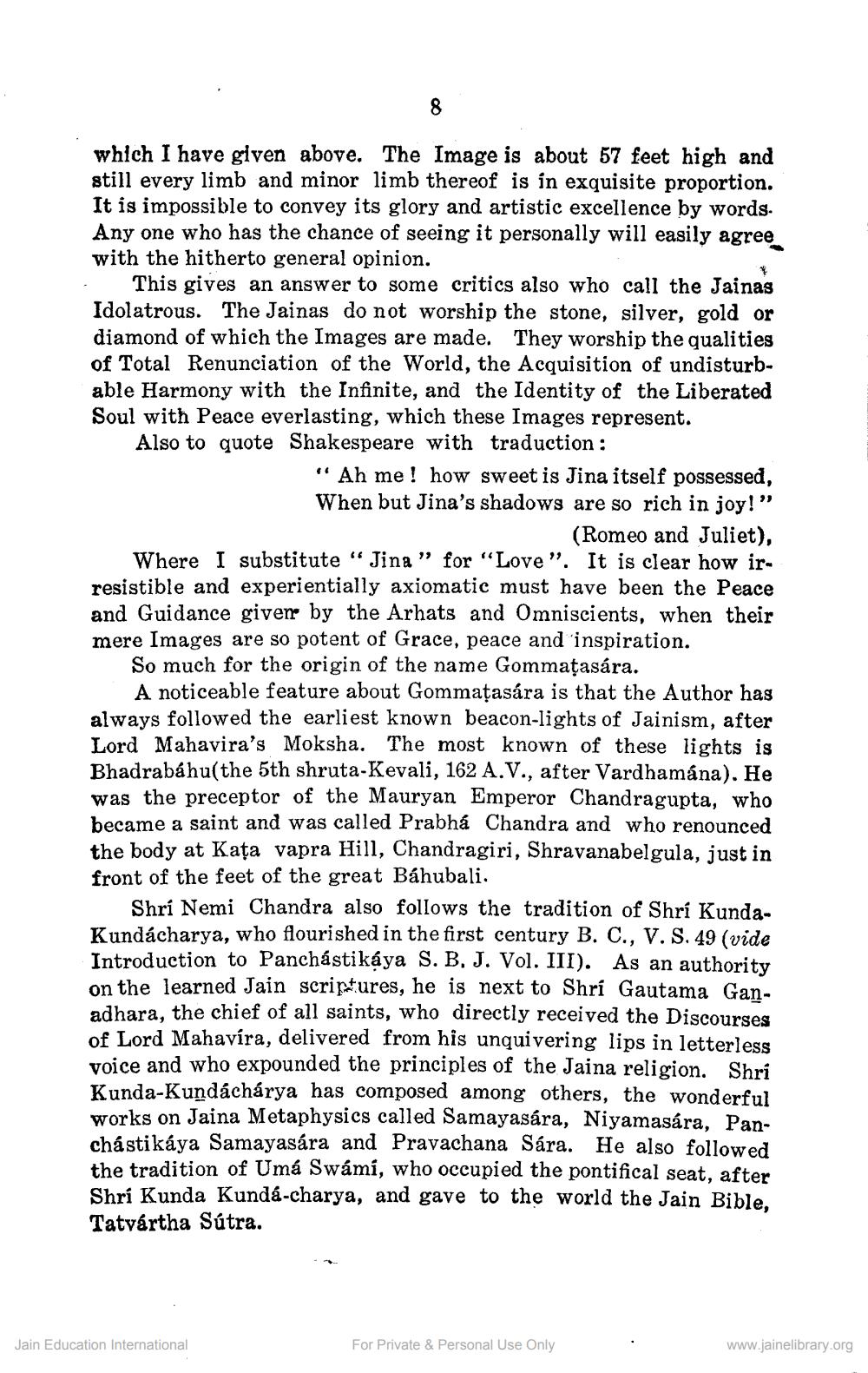________________
8
which I have given above. The Image is about 57 feet high and still every limb and minor limb thereof is in exquisite proportion. It is impossible to convey its glory and artistic excellence by words. Any one who has the chance of seeing it personally will easily agree with the hitherto general opinion.
*
This gives an answer to some critics also who call the Jainas Idolatrous. The Jainas do not worship the stone, silver, gold or diamond of which the Images are made. They worship the qualities of Total Renunciation of the World, the Acquisition of undisturbable Harmony with the Infinite, and the Identity of the Liberated Soul with Peace everlasting, which these Images represent. Shakespeare with traduction :
Also to quote
"Ah me! how sweet is Jina itself possessed, When but Jina's shadows are so rich in joy!" (Romeo and Juliet),
Where I substitute "Jina " for "Love". It is clear how irresistible and experientially axiomatic must have been the Peace and Guidance given by the Arhats and Omniscients, when their mere Images are so potent of Grace, peace and inspiration.
So much for the origin of the name Gommaṭasára.
A noticeable feature about Gommațasára is that the Author has always followed the earliest known beacon-lights of Jainism, after Lord Mahavira's Moksha. The most known of these lights is Bhadrabáhu(the 5th shruta-Kevali, 162 A.V., after Vardhamána). He was the preceptor of the Mauryan Emperor Chandragupta, who became a saint and was called Prabhá Chandra and who renounced the body at Kața vapra Hill, Chandragiri, Shravanabelgula, just in front of the feet of the great Báhubali.
Shri Nemi Chandra also follows the tradition of Shri KundaKundácharya, who flourished in the first century B. C., V. S. 49 (vide Introduction to Panchástikaya S. B. J. Vol. III). As an authority on the learned Jain scriptures, he is next to Shri Gautama Ganadhara, the chief of all saints, who directly received the Discourses of Lord Mahavíra, delivered from his unquivering lips in letterless voice and who expounded the principles of the Jaina religion. Shri Kunda-Kundáchárya has composed among others, the wonderful works on Jaina Metaphysics called Samayasára, Niyamasára, Panchástikáya Samayasára and Pravachana Sára. He also followed the tradition of Umá Swámí, who occupied the pontifical seat, after Shri Kunda Kundá-charya, and gave to the world the Jain Bible, Tatvártha Sútra.
Jain Education International
For Private & Personal Use Only
www.jainelibrary.org




